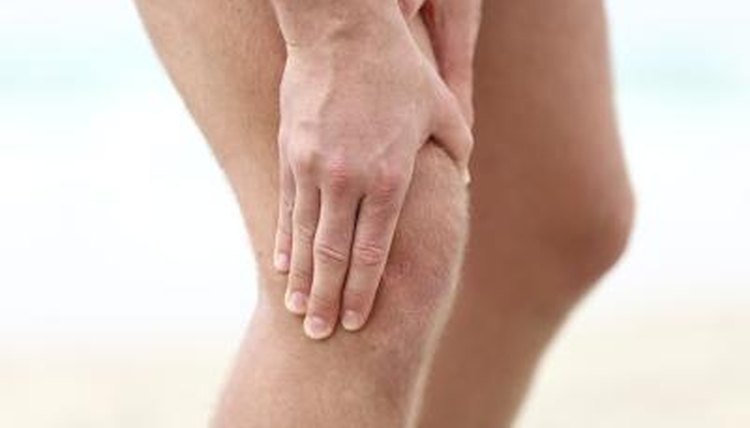What Exercise Can Be Done With a DVT in the Leg?

DVT or deep vein thrombosis is a blood clot (thrombus) inside a deep vein in the body, often in the thigh or calf. DVT can develop after surgery (particularly after hip or knee replacement), or from sitting for a long period of time. If a DVT travels through the circulatory system to the heart or lung, it can be life threatening. Certain exercises are advised after treatment for DVT and as an effective preventative measure.
Symptoms

Maridav/iStock/Getty Images
Many cases of DVT occur without any noticeable symptoms, according to the Mayo Clinic. When they do occur, symptoms of a dvt in the leg include: swelling in the leg, foot and ankle; redness, warmth and pain. If a clot forms in the arm, symptoms include swelling and pain in the arm and neck. If signs or symptoms of DVT develop, you should visit your doctor immediately and refrain from any exercise until after you receive treatment.
Treatment

Maridav/iStock/Getty Images
Before starting any exercise program, it is important to be treated for the DVT, according to the American Academy of Orthopaedic Surgeons. Exercising before treatment can lead to mobilization of the DVT. Treatments include: anticoagulant medications to thin the blood; thrombolytic medications such as tissue plasminogen activator to break up blood clots; surgically implanted filters to prevent clots from traveling through the circulatory system; and compression bandages to help prevent swelling and pooling of the blood.
Early Mobility

Maridav/iStock/Getty Images
Once the DVT patient has been treated to break up the clot and prevent another from forming, exercise is recommended. According to Investigators Against Thrombo Embolism (INATE), recovery time is significantly reduced in patients who begin exercise immediately after starting treatment. They recommend early, slow walking exercises 24 hours after treatment followed by average daily walking distances of 600 to 12,000 meters. Each patient is different and a physician should be consulted about post DVT exercise on a case-by-case basis.
After Recovery

Maridav/iStock/Getty Images
After recovering from an episode of DVT, patients are advised to embark on a restorative and preventative exercise program, according to the Mayo Clinic. Along with regular cardiovascular exercise, they advise lower calf exercises and lifestyle changes to control obesity and quit smoking, both risk factors for the disorder.
Plane Exercises

Maridav/iStock/Getty Images
DVT often develops during long plane flights while passengers are relatively immobile and subjected low air pressure. The American Council on Exercise suggests several simple exercises travelers can do in their seats to prevent the development of DVT. These exercises include: ankle turns, foot lifts, knee lifts, arm bends, shoulder rolls, knee to chest lifts, forward bends, upper body stretches, shoulder stretches and neck rolls.
References
Resources
